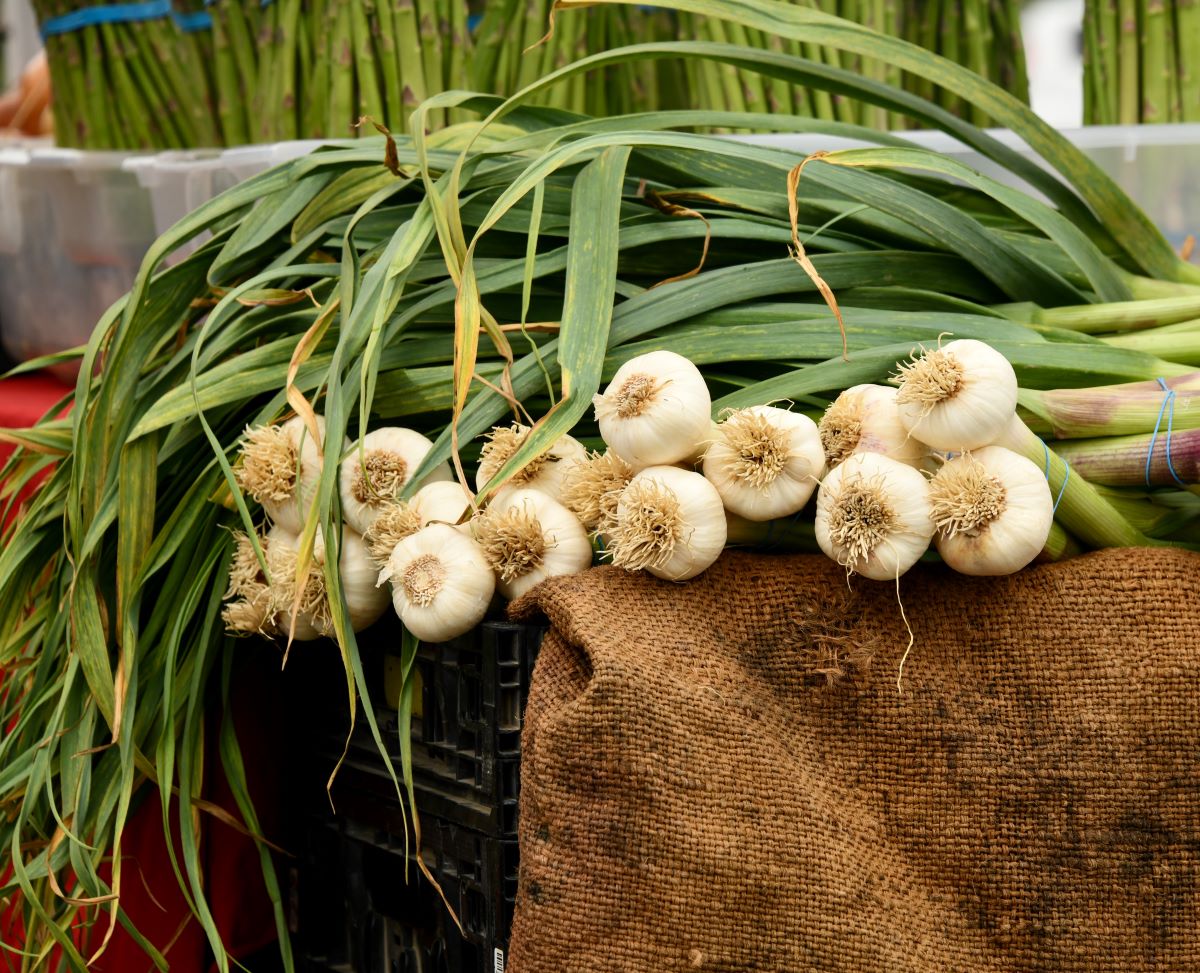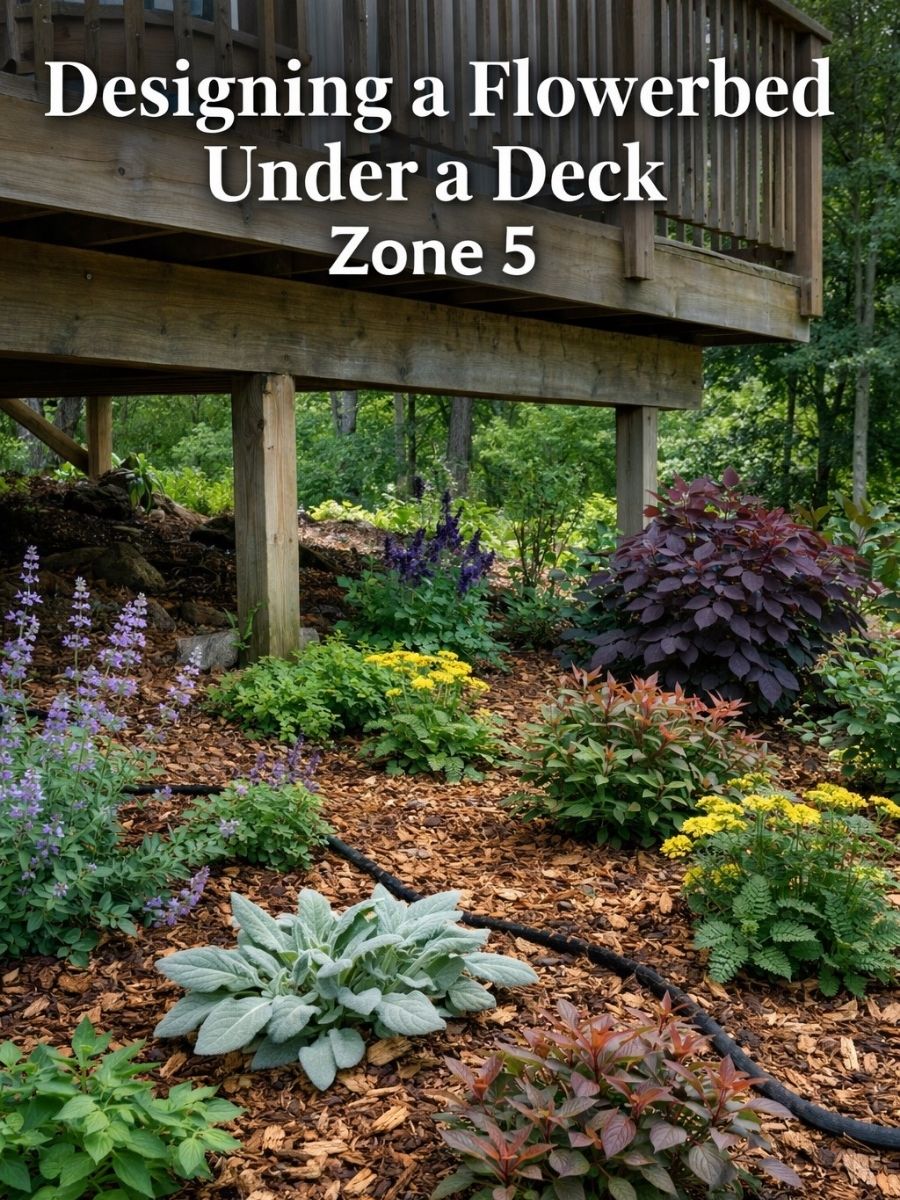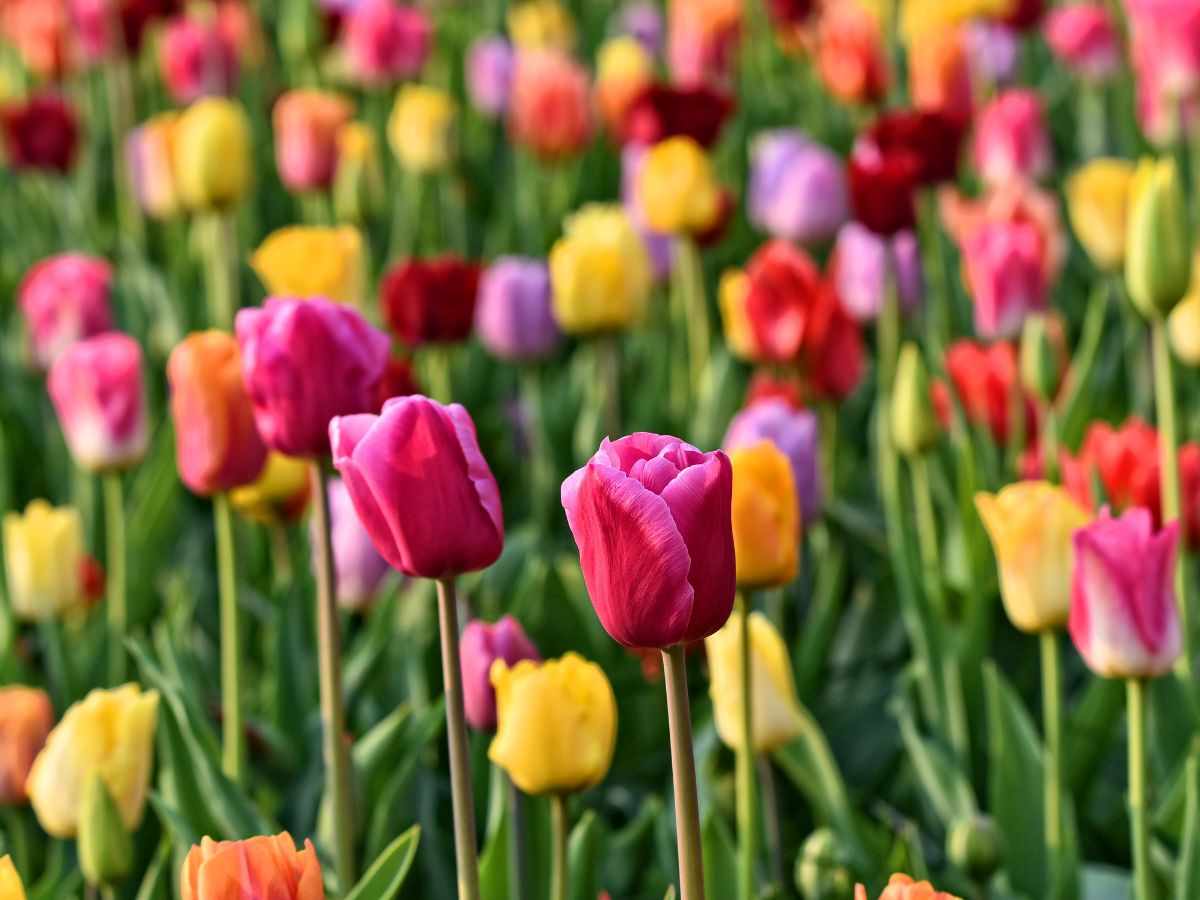This post is going to help you understand how to grow garlic step by step. Whether you are a beginner gardener, or a seasoned gardener, this post is going to offer you with many helpful information to aid you on your garlic growing journey.
Disclosure: This post contains affiliate links. As an Amazon Associate I earn from qualifying purchases.
How to Grow Garlic for Beginners
Growing garlic is a simple process that we tend to over complicate. Learn how to grow garlic with these simple and direct instructions right here.
- How can you grow garlic?
- Does garlic need full sun?
- What month do you plant garlic?
- What happens if you plant garlic in the spring?
- Do you water garlic after planting?
- How close together can you plant garlic?
- How deep should you plant garlic?
- How do you know when to harvest garlic?
How Can You Grow Garlic?
You can grow garlic in many different ways, seeds, store bought, from last years garlic, and more.

Can you grow garlic from garlic seeds
Garlic seeds are like any seeds, the seeds that are produced by the garlic plant. Typically, when a garlic bulb is planted, as it reaches a certain point of growth, it sends out a flowering scape that then produced seeds.
Garlic seeds, like onion seeds can be planted, and will produce bulbs; however, it will take longer for it to produce a large garlic head.
Can I Plant Shop Bought Garlic
You can definitely grow shop bought garlic. However, one thing to keep in mind, is that some store bought garlic is treated with a sprout inhibitor. This then prevents the garlic from sprouting and growing a head.
To insure that you’re garlic is going to grow, you can buy garlic heads from the organic section.
To give you a boost of confidence, all my garlic was started from store bought garlic.
Can You Grow Garlic From Last Years Bulbs?
The answer is absolutely yes, you definitely can grow garlic from last years bulbs! As long as your garlic heads have stored well, they are not soft, or rotting, they should be ok to be planted. I have planted garlic from my stored bulbs with great success.
After your garlic has been properly cured, take out the largest of your garlic heads, and store them separately for planting.
You always want the best, and largest garlic cloves for planting.

Does Garlic Need Full Sun?
Garlic, like most bulbs, grows best in full sun. You want to give it at least 6 to 8 hours of sunlight for the bulbs to grow to their full potential. The leaves that the garlic head produces, absorb the energy from the sun and send it back to the bulb. The more sun the bulb receives, the larger it grows.
What Month Do You Plant Garlic?
You can start planting garlic in late August or September. You are still able to grow garlic in late fall as long as the ground is not frozen.
If garlic is planted too early, it will send out growth to the top. You might see large leafy growth, but it will die back in the winter, and comes back early spring.
When you plant garlic too early, you might have to harvest it a lot earlier than the usual time. If you do not have a root cellar, and are just storing it in your cool basement, this might impact how well it stores over time.
I prefer to plant my garlic late rather than early because garlic prefers to be stored in cool temperatures. If storage temperatures get above 60 F, garlic begins to sprout and deteriorate.
What Happens if You Plant Garlic in the Spring?
If you plant garlic in the spring you will get a much smaller head of garlic. Garlic takes about 7 to 9 months to produce large heads. In the first few months of planting garlic focuses on producing roots, and creating new cloves. When harvested early, the garlic cloves will not have the time to head up.
You can still grow garlic in the spring, but expect a much smaller head of garlic than if you were to plant them in the fall.
Do You Water Garlic After Planting?
Unless you live in a very dry area, you do not have to water garlic after planting. If you area gets a lot of snow and rain, you do not need to water it after planting.
In fact too much water can cause garlic to rot. Make sure to not overwater it if you plan on having garlic for your next season.
If the are you are are planting is too wet, choose an area that gets less moisture to prevent the garlic from rotting.

How Close Together Can You Plant Garlic?
Garlic should be planted about 4 to 6 inches apart. If you plant garlic any closer, expect the heads to be much smaller.
Also make sure that there is no weed competition in your garlic bed.
Garlic is a bulbing plant. Bulbing plants need a lot of nutrients because they require a lot of energy to head up. So make sure to fertilize your garlic with a good fertilizer at least twice. Once planted, and a second time during the growing season.
How Deep Should You Plant Garlic?
Plant garlic cloves about 3 to 4 inches deep with the pointy side up. The pointy side is the side that is going to produce the leaves, and the rough flat side is the side where the roots are produced. Once the garlic is planted, cover it with a good layer of straw mulch to prevent weeds, and protect the newly planted garlic from the freeze thaw cycle.
You can use a garden hoe to dig up a trench. Line up the garlic cloves, with the skin still intact, 4 to 6 inches apart with the pointy side up, place fertilizer along with the cloves, cover with soil and then mulch.
How Do You Know When to Harvest Garlic?
You can tell when garlic is ready to be harvested when the first 2 to 3 leaves dry up, and turn brown. If you wait any longer, the garlic heads can begin to rot, or begin to produce new small heads from their cloves.
Learn More About Gardening and Get Recipe Inspirations Right Here
How To Prune Apple Trees For Fruit Production And Tree Health
Gluten Free Brownie Recipe – Fudge Brownies
Disclosure: Some of the links in this post are “affiliate links”. This means if you click on a link and purchase the item, I will get an affiliate commission. It will not cost you any extra money, but it will help me pay for this website, and it will help me to keep providing you with helpful articles such as this one. I only post links to products that I personally use and love, or to products that I wish I could have, and that could be of value to you. The information that I provide you with, my blog, videos, and many resources are free.





Be the first to reply